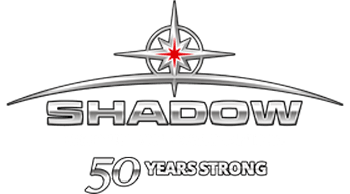Simply put, container drayage refers to the logistics of transporting large containers a short distance via ground freight. If you’ve ever wondered how a rail car gets from point A to point B—or what happens after it’s loaded onto a truck—this process is called drayage.
At Shadow Group, we specialize in managing these critical container moves across Western Canada and the U.S. In this blog, we’ll break down the importance of container drayage services, how it compares to intermodal and cartage services, the different types of drayage, and why it plays such a key role in supply chain efficiency.
Drayage, Intermodal, and Cartage – What’s The Difference?
You might hear the terms drayage, intermodal, and cartage used interchangeably, but each has key differences. However, these 3 services depend greatly on each other to bring goods and materials to the customer, highlighting the importance of container drayage services in maintaining an efficient supply chain.
Intermodal transportation involves moving large goods in the same containers using more than one mode of transport. As noted above, drayage is the movement of freight over a short distance that connects the modes of transport and can often be done in one driver shift. While drayage transports the entire container, cartage involves breaking the container down into smaller hauls to ship products over a short distance, typically within a town or commercial area.
Classifications of Drayage
There are 6 different types of drayage to be aware of:
- Inter-carrier drayage – Involves transporting an intermodal unit from one railroad to another, sometimes referred to as cross-town drayage.
- Intra-carrier drayage – Refers to the movement of containers from one port, terminal, or rail hub to another and is often the longest drayage move. It is owned by the same carrier or for the same shipment.
- Door-to-door drayage – Also known as retail drayage, door-to-door classification refers to road transportation of a container from the port or terminal directly to the end destination.
- Shuttle drayage – Typically done when there is no room for the container at the hub and transported instead to another yard.
- Expedited drayage – When a container needs to be delivered quickly, usually for time-sensitive goods.
- Pier drayage – Movement of a cargo container or intermodal unit from a rail hub to a port or pier.
The Importance Of Container Drayage Services
Container drayage plays a crucial role in connecting the different stages of freight movement. It’s often the most unpredictable part of the journey, impacted by factors like port congestion, regulations, and weather.
At Shadow Group, we minimize these risks through a detailed planning process that ensures every move is smooth, compliant, and efficient. Our expertise also extends to cross-border drayage, where we stay ahead of regulatory changes to keep your containers moving seamlessly between Canada and the U.S.
Whether you’re moving one container or coordinating hundreds across borders, Shadow Group is your go-to partner for reliable, efficient, and professional drayage services. Reach out to us today to learn more!
